The wind doesn't seem to want to leave us alone and we're tired of it! OK, I got that out of my system and I can move forward now and tell you about our day.
Bob took some photos of the snow capped mountain that we can see from our front yard.
We heard about an oasis not too far from here so we're going to check it out. It will probably be as strange seeing an oasis as it did seeing the Salton Sea in the middle of the desert.
Here's a shot to give you an idea of how windy it is here today. You can see the flags standing straight out and palm trees don't normally grow that way.
Our view as we travel down the road,,,,not bad eh?
It didn't take us long at all to find the Coachella Valley Preserve, we were told to look for the palm trees. It is more commonly known as Thousand Palms Oasis.
The preserve is located on the trace of the San Andreas Fault between the towns of Palm Springs and Indio, California. (Wow, had I know we were this close to the San Andreas Fault I would have been panicking every day!)
The preserve encompasses 17,000 acres, protecting three separate desert dune fields and six palm forests in which over 1,500 palms live. It is also part of 20,000 acres dedicated to protect the habitat of the Coachella Valley Fringe-toed Lizard and other species. This is probably one of those endangered lizards as they only live here in this area.
The Desert Fan Palms are the only palm that is native to the western US. When the leaves of the Desert Fan Palm die off they don't fall but just hang there providing shelter for the creepy crawly things of the desert. Spiders and lizards and bats OH MY! Spiders and lizards and bats OH MY! Spiders and lizards and ....well you get the idea.
This should give you an idea of how big these palms are.
A palm of many colors.
If you walked to the center of this stand of Desert Fan Palms it would be 15 - 20 degrees cooler than outside of it.
Fan Palms don't have growth rings, so it is difficult for botanists to tell; but some are thought to be perhaps 200-250 years old. The scientific name, Washingtonia filifera, was given in honor of George Washington, who could have been President when some of the palms living today were just seedlings.
If you are ever looking for water in the desert you can always find it where native Desert Fan Palms grow indicating springs and streams. These palm oases occur along earthquake fault zones where crushed rock and clay act like an underground dam, interrupting water flow and pushing it to the surface. Gosh, we learn so much when we visit places like this.
We saw this dragon fly sunning itself and of course as soon as I snapped a picture it closed its wings.
A strange flowering bush we had not seen the likes of before.
A totem pole made out of a palm tree.
In 1906, Louis Wilhelm traded two mules and a wagon for 80 acres of this canyon. His original house still stands and houses the visitor center.
Somebody had some fun with a palm leaf as shown in this picture.
A closer look...
Although we didn't see the actual oasis, we thoroughly enjoyed our time amongst the Desert Fan Palms and were glad we took the time to visit this preserve. Had we known what to expect we would have come earlier in the day when it isn't so hot in the desert and brought water to drink as we walked the trails.
Back at home we had dinner and settled in for this week's edition of American Idol on TV.


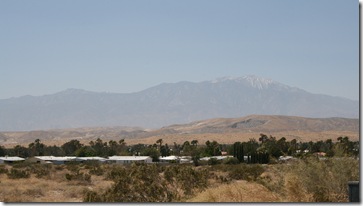
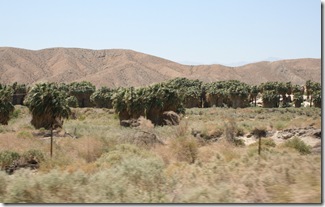
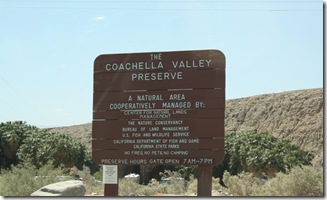
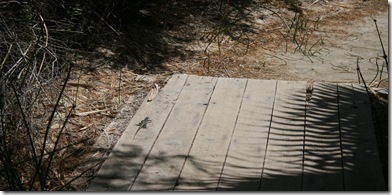


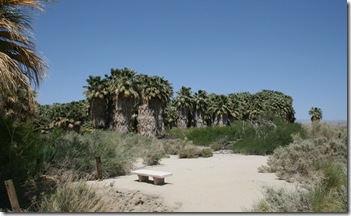

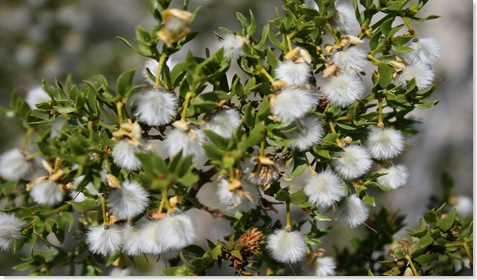
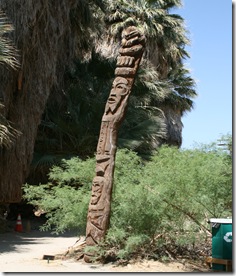

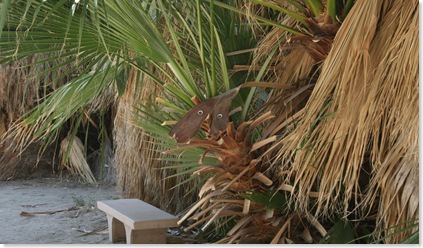
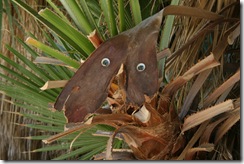
No comments:
Post a Comment